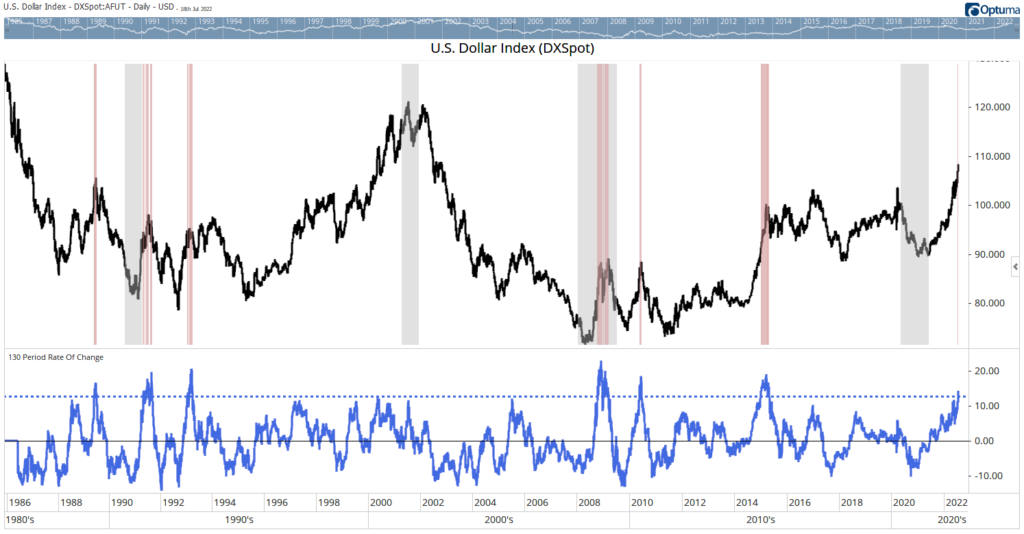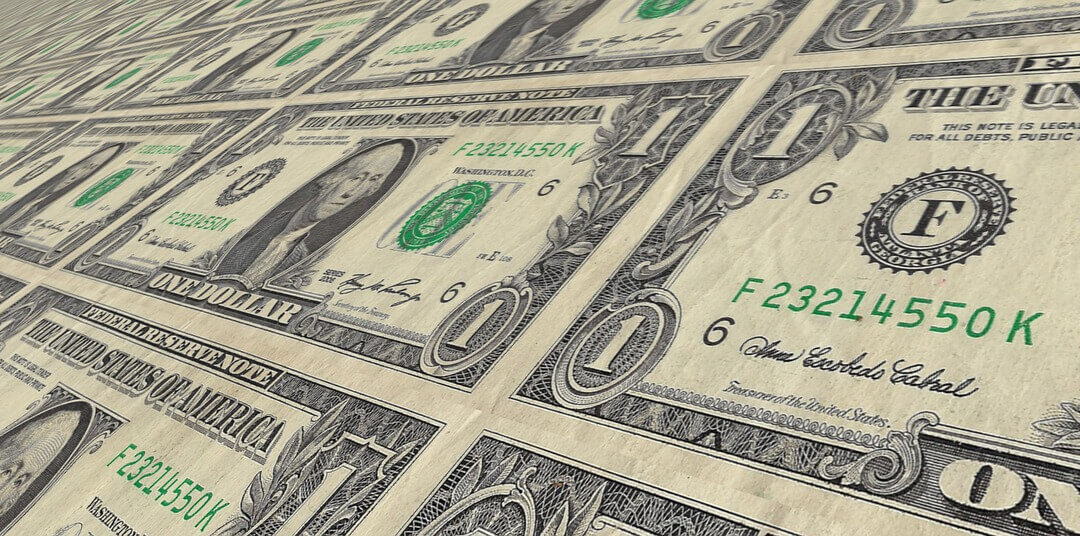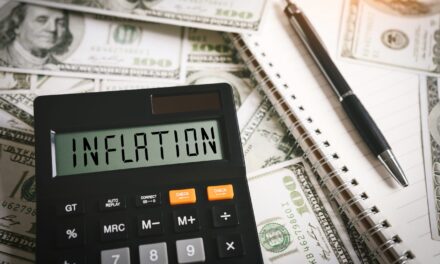Markets forecast recessions.
Stock market weakness signals economic weakness. So does a decline in long-term interest rates in the bond market.
The U.S. dollar is also an economic indicator, and it’s at a 20-year high.
The strength could be due to rising short-term interest rates and worries about the global economy.
Strong U.S. Dollar Signals Recession
When the Federal Reserve raises short-term rates, international investors find short-term securities in the U.S. more attractive than what’s available in countries with lower rates.
As they buy dollars to capture those yields, the value of the dollar rises.
The dollar also benefits from turmoil around the world. Adding potential energy and food crises to the high-inflation environment increases risk in emerging markets.
Investors in those countries move assets to dollars to avoid volatility.
But dollar strength can be bad for the U.S.
The chart below shows the dollar’s value. Grey bars show recessions. Red bars highlight times when the dollar index has gained at least 13% in six months as it has now. The correlation between U.S. dollar strength and recession is clear.
Dollar Just Soared 13% Higher Again

That makes sense.
A strong dollar is both good and bad news.
A Strong Dollar: Perks and Pitfalls
It’s welcome news for Americans traveling abroad. A latte in Paris is more affordable for tourists.
But a strong dollar makes imports from other countries more expensive. It increases borrowing costs for poorer countries that use dollars rather than their own unstable currencies.
Because it makes it more difficult for other countries to afford imports, a strong dollar will lower earnings for large-cap companies that derive significant revenue from overseas markets.
Earnings for the S&P 500 will be affected because they come at a time when demand in the U.S. is waning because of inflation.
Bottom line: Given all the negatives, it’s not surprising that a strong dollar is associated with recessions.
It’s additional confirmation that the economy is moving toward, or may even be in, a contraction.
Michael Carr is the editor of True Options Masters, One Trade, Precision Profits and Market Leaders. He teaches technical analysis and quantitative technical analysis at the New York Institute of Finance. Follow him on Twitter @MichaelCarrGuru.





